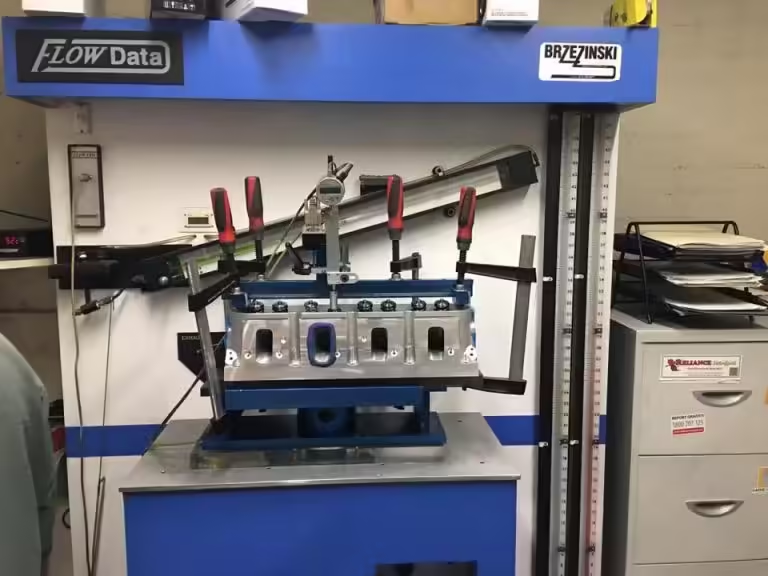
Every LSA based product we test is with the intention of making our own car as fast as possible.
From this R&D comes a lot of testing, it’s no secret we have done a lot of testing especially when it comes to cylinder heads.
All up we have flow tested 12 different aftermarket and factory castings, on all heads we have CC’ed the ports, worked out minimal cross sectional area (CSA) and velocity. For our benefit to find the winning combo.
Your cylinder heads and valves are the biggest flow restriction in your engine, getting air in and out as FAST as possible is critical.
The data collected below we have used to work out what is the best. You’ll often hear cylinder head porters claim “we don’t race flow benches”. Now this statement is 100% true, however they all own a flow bench for a reason!
The real test of potential HP/TQ gains is from calculated velocity, knowing the CC (cubic centimeters) of the ports and the CSA (minimal cross sectional area). From this information along with the CFM flow data you can accurately determine what is good and what is better.
In this cylinder head shoot out we are going to show you 5 different heads, since we do not have the various head porters consent to do this comparison we are going to label them as follows:
- Stock LSA (bone stock GM cast LSA head)
- LSA Brand H (CNC ported LSA head)
- LSA Forced Induction Interchillers (CNC ported LSA head)
- Brand T (aftermarket casting CNC ported LS3 head)
- Brand M (aftermarket casting CNC ported LS3 head)
Stock LSA vs Brand H
First on the list is Brand H – CNC ported LSA head.
The Stock LSA intake port is 259cc
Brand H intake port is 287.5cc
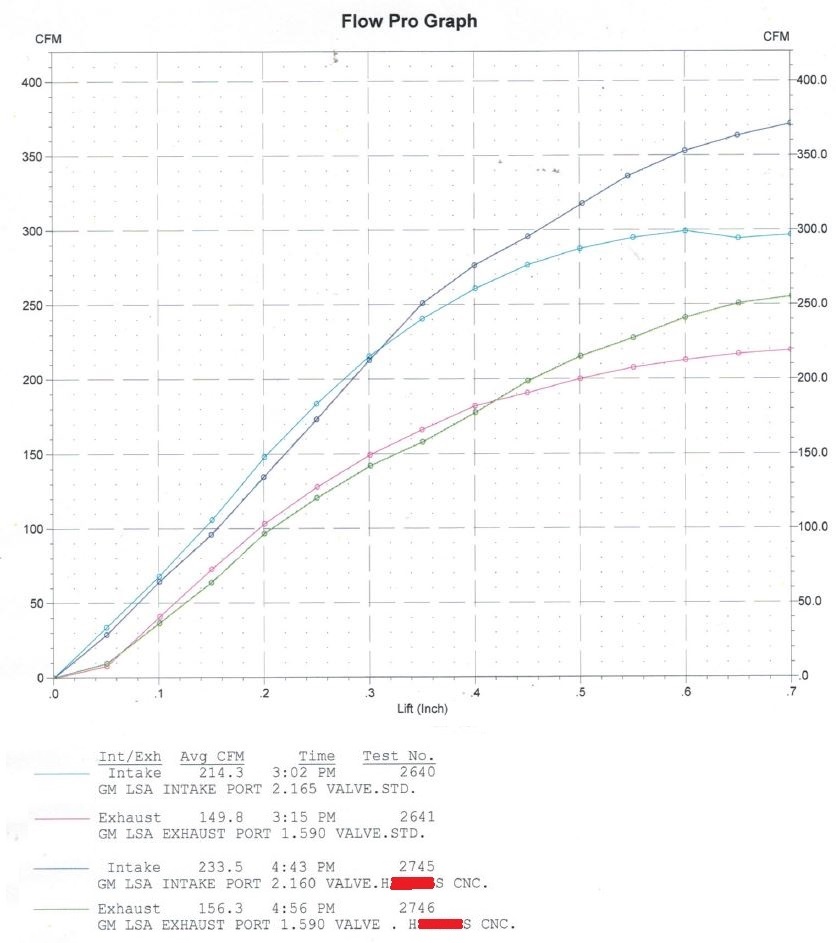

Brand H’s heads having the larger port and the larger CSA, a lot of velocity has been lost, in this graph we can see that this head actually flows less CFM and less velocity with the larger port up to 0.325″ lift on the intake and 0.430″ thou lift on the exhaust compared to stock, that’s not good.
Since most people run a camshaft with a peak valve lift usually between 0.500″ and 0.650″ half of the camshaft lift flow and velocity has been lost. Those losses of CFM and velocity are then made up for at the peak lift figures….a robbing Peter to pay Paul type of scenario. The interesting thing with Brand H’s heads is they are advertised to flow over 380CFM which is a great marketing tactic… but that’s only at 0.900″ lift which nobody runs other than full blown drag cars and if you did run that kind of lift it wouldn’t be with an LS3 factory based head.
Stock LSA vs FII
Next on the list is Forced Induction Interchillers – CNC ported LSA head.
The Stock LSA intake port is 259cc
FII intake port is 275cc
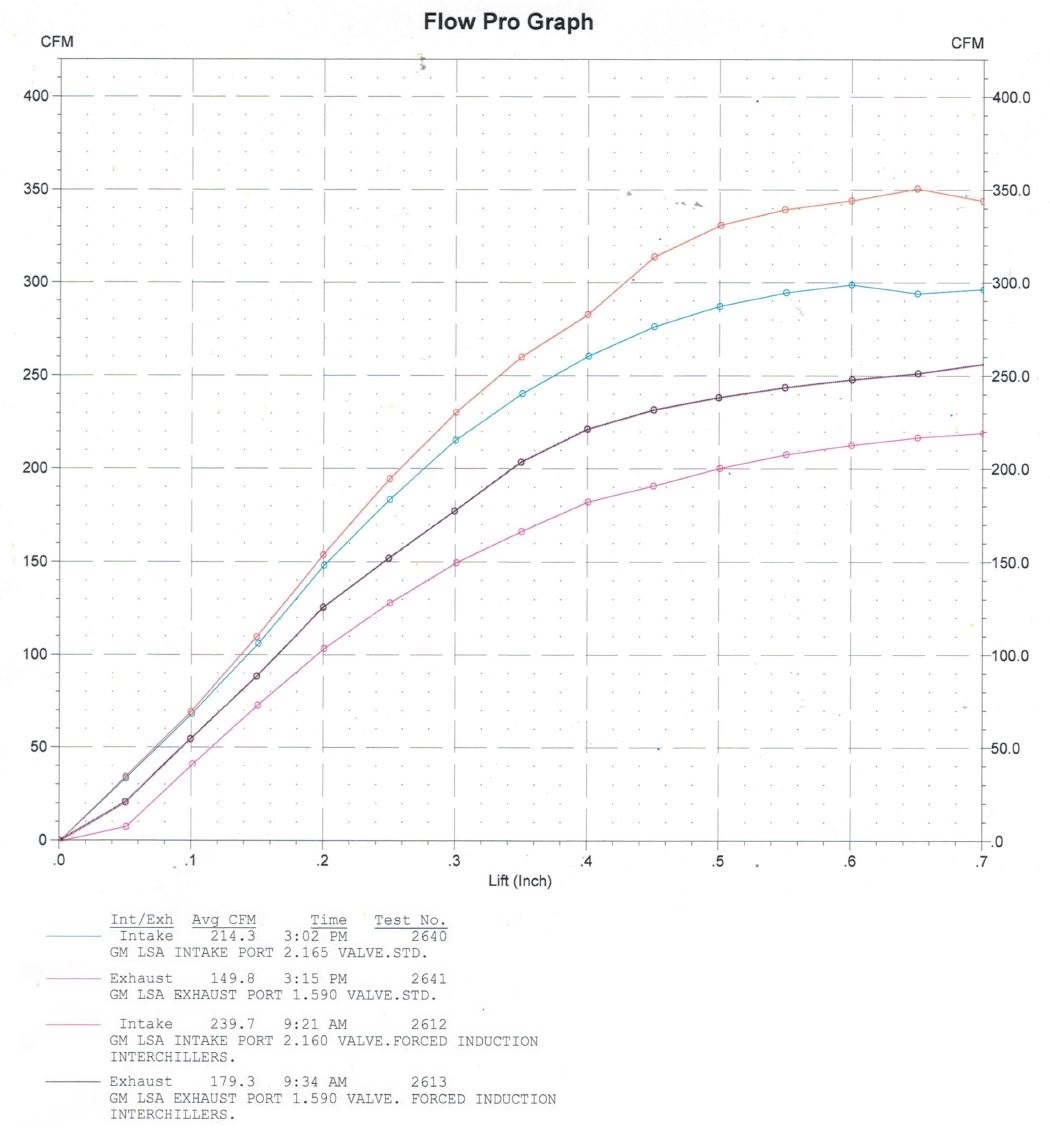

On the FII head vs the stock LSA we can see that intake flow exceeds the stock LSA head from 0.075thou lift, right up to peak lift flowing more and more and a small drop in flow starting to begin 0.650″ lift, showing that this head was designed for camshafts up to 0.650thou lift.
On the exhaust side we can see particular attention has been paid here since being made for a supercharged application exhaust evacuation is critical, the average flow through the curve there of the exhaust is extremely good.
Since brand H and FII are both on the stock LSA casting lets compare them against one another below:
FII LSA Intake 275cc
FII LSA Exhaust 90cc
Brand H LSA Intake 287.5cc
Brand H LSA Exhaust 99cc
FII LSA vs Brand H


As can be seen the FII head has shown a higher CFM and velocity with smaller ports on both intake and exhaust. At 0.560″ thou lift brand H on the intake has increased flow due to the much larger port size 275cc vs 287.5cc, since a camshaft peak valve lift is generally between 0.500″ and 0.650″ this minor gain cannot make up for all of the losses through the rest of the lift range. Given that a camshaft also spends minimal time at peak valve lift and more time getting to peak lift the better intake port here is clearly the FII head.
On the exhaust side since brand H was actually down on flow vs the stock LSA head up to 0.430″ thou lift it’s simply no contest.
The FII head has smaller ports with more CFM and velocity it is the superior head.
Since the FII CNC LSA head has shown to be a very good head for the subsequent flow comparisons we will overlay it against the aftermarket castings of brand T and brand M.
Brand T vs FII
Brand T intake port is 260cc
Brand T exhaust port is 90cc
FII intake port is 275cc
FII exhaust port is 90cc
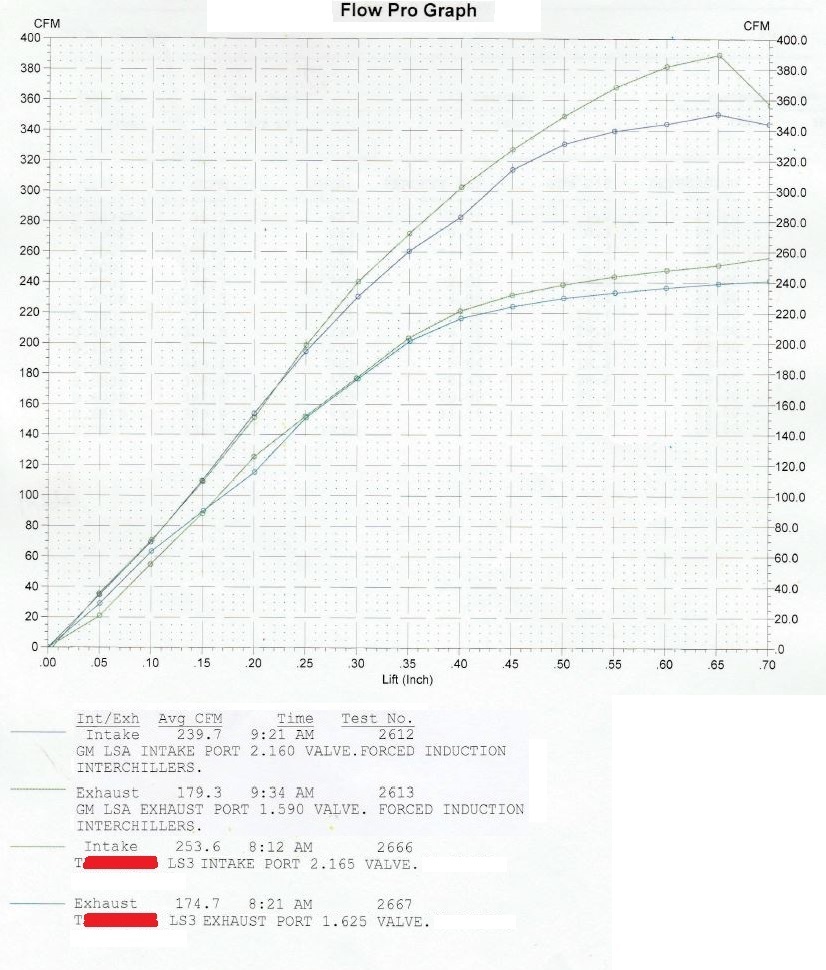

Now this is where things get interesting brand T is an aftermarket casting so a lot more time has been put into the casting allowing sufficient material in critical areas to keep the port flowing very well. We can see on the intake side Brand T matches FII up to 0.250″ and then runs away. Since this intake port is 260cc vs 275cc and the CSA is also smaller the superior intake port is brand T.
However the exhaust side is a whole different story, we can see brand T is flowing a touch more up to 0.150″ lift and then the FII head runs away, this is also evident with the average CFM numbers, brand T being 174.7CFM and FII being 179.3CFM.
Some might argue that brand T is the better head here because of the intake flow, others may argue that the FII LSA is better due to the exhaust flow.
Which is more critical on a boosted application you may ask intake or exhaust? The answer is both, however since we have a blower able to force the air in on the intake side the exhaust is basically left in a naturally aspirated state.
This comparison brand T and FII LSA is too close to call which head is better than the other.
Brand M vs FII
Brand M intake port is 270cc
Brand M exhaust port is 93cc
FII intake port is 275cc
FII exhaust port is 90cc
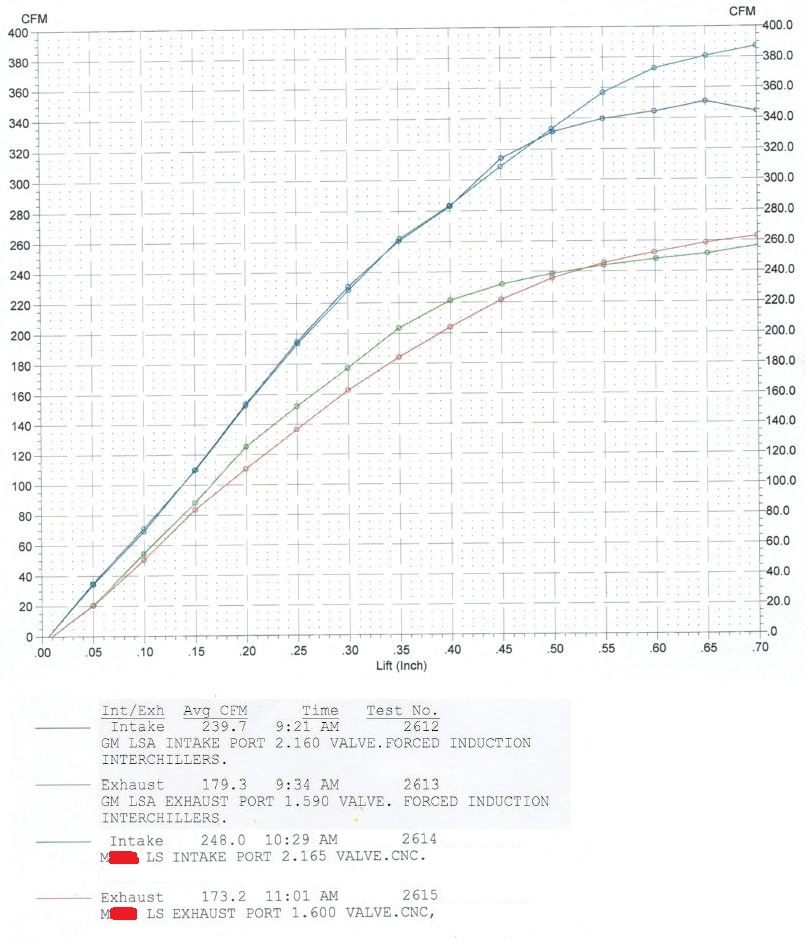

This is also an interesting comparison brand M being an aftermarket casting again with the ability to shape the port very well, we can see on the intake that the FII head is flowing just a touch more CFM up to 0.500″ lift after that point brand M runs away with it’s superior port design. When working on these heads the CSA was actually almost identical so velocity is very similar, in saying that the better intake port here is brand M but only by a very small margin being the port is 270cc vs 275cc and the additional up top flow it has.
On the exhaust side there is no contest the superior port is the FII head it has out flowed brand M all the way up to 0.550″ lift which is also evident with the average CFM numbers, brand M being 173.2CFM and FII being 179.3CFM, cylinder evacuation on the FII head is superior to that of brand M.
Now keep in mind, your camshaft lobe profile, the goal of the camshaft is to reach peak valve lift as fast as possible, however it isn’t possible to linger at peak lift for very long, since majority of people run a camshaft with a peak valve lift between 0.500″ and 0.650″ in this case the superior head is FII vs brand M. It is superior because there is no flow loss on the intake side and the gains made on the exhaust side are critical to cylinder evacuation especially on a supercharged engine. FII is the superior head, a stock casting that is outperforming an aftermarket casting which is very impressive.
If you have a set of head that you would like flow tested and compared to our results on the exact same flow bench, we can do this for $150 AUD, which includes CC’ing the ports, chamber and CSA.
